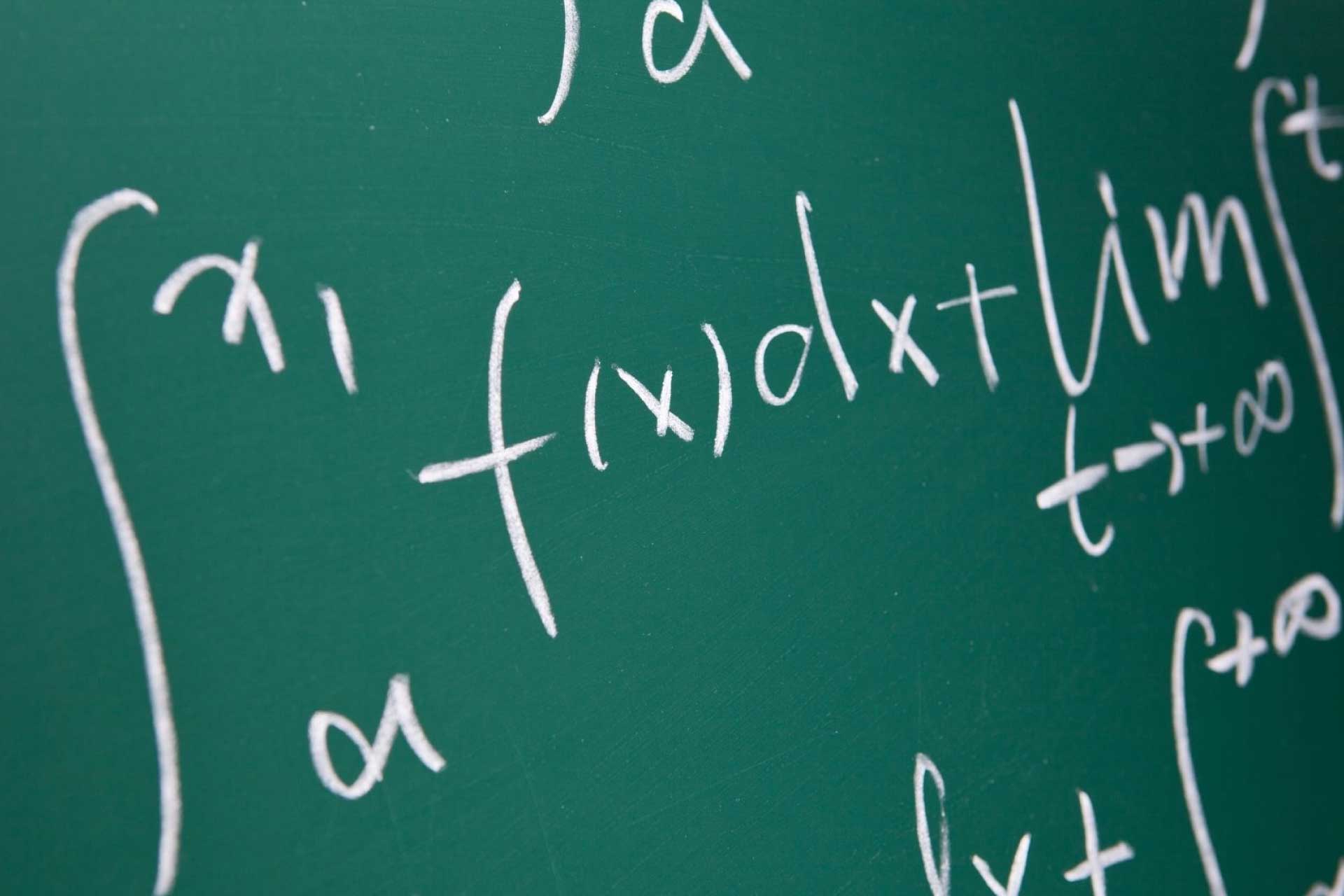Home>Mathematics>The Ultimate Guide To Finding The Sum Of A Geometric Sequence


Mathematics
The Ultimate Guide To Finding The Sum Of A Geometric Sequence
Published: January 10, 2024
Discover the step-by-step process for finding the sum of a geometric sequence in mathematics with this comprehensive guide. Master the concept and excel in your studies!
(Many of the links in this article redirect to a specific reviewed product. Your purchase of these products through affiliate links helps to generate commission for Regretless.com, at no extra cost. Learn more)
Table of Contents
Introduction
Understanding the concept of geometric sequences and the method to find their sum is a fundamental aspect of mathematics. Whether you are a student delving into the world of sequences and series or an enthusiast seeking to deepen your mathematical knowledge, mastering the art of finding the sum of a geometric sequence is an invaluable skill.
Geometric sequences, also known as geometric progressions, are a sequence of numbers in which each term after the first is found by multiplying the previous term by a fixed, non-zero number called the common ratio. This characteristic distinguishes geometric sequences from arithmetic sequences, where each term is obtained by adding a fixed number to the previous term.
In this comprehensive guide, we will explore the intricacies of geometric sequences and equip you with the tools to calculate the sum of both finite and infinite geometric sequences. By the end of this journey, you will have a firm grasp on the underlying principles and techniques essential for unraveling the mysteries of geometric sequences.
So, buckle up and prepare to embark on a captivating mathematical expedition where we unravel the secrets of geometric sequences and empower you to conquer the challenge of finding their sum. Let's dive into the world of geometric sequences and unlock the potential to wield this knowledge with confidence and precision.
Understanding Geometric Sequences
Geometric sequences are a fascinating realm within the vast landscape of mathematics. They exhibit a distinct pattern where each term is obtained by multiplying the preceding term by a constant factor known as the common ratio. This characteristic lends geometric sequences their unique structure and sets them apart from other types of sequences.
To grasp the essence of geometric sequences, consider the following example: 2, 6, 18, 54, 162… In this sequence, each term is three times the preceding term, illustrating the consistent multiplication by the common ratio of 3. This unvarying pattern is a defining trait of geometric sequences and serves as the foundation for their study and analysis.
The general form of a geometric sequence can be expressed as follows: a, ar, ar^2, ar^3, …, where 'a' represents the first term and 'r' denotes the common ratio. It is worth noting that the common ratio 'r' can be either positive or negative, leading to sequences that either grow or diminish with each term.
Understanding the behavior of geometric sequences is crucial for various real-world applications, such as population growth, financial investments, and exponential decay. These sequences offer a powerful framework for modeling and predicting phenomena governed by exponential growth or decay processes.
Furthermore, the concept of geometric sequences extends to the realm of series, where the sum of the terms in a sequence, known as the series, holds significant importance. This interplay between sequences and series forms a fundamental aspect of mathematical analysis and finds widespread utility in diverse fields, including finance, physics, and computer science.
In essence, delving into the realm of geometric sequences unveils a world of order and predictability governed by the elegant interplay of numbers and ratios. By comprehending the underlying principles and patterns of geometric sequences, one gains a valuable insight into the fundamental building blocks of mathematical structures, paving the way for deeper exploration and application of these concepts.
As we venture further into the realm of geometric sequences, we will unravel the techniques for finding the sum of both finite and infinite geometric sequences, equipping you with a powerful toolkit to navigate the intricacies of these captivating mathematical constructs.
Finding the Sum of a Finite Geometric Sequence
In the realm of mathematics, the ability to calculate the sum of a finite geometric sequence is a valuable skill that holds practical significance in various fields. A finite geometric sequence consists of a specific number of terms, and determining its sum involves leveraging a well-defined formula rooted in the fundamental properties of geometric sequences.
The formula for finding the sum of a finite geometric sequence is a testament to the elegant simplicity that underlies this mathematical concept. It can be expressed as:
[ S_n = a frac{(r^n – 1)}{(r – 1)} ]
In this formula, ( S_n ) represents the sum of the first 'n' terms of the geometric sequence, 'a' denotes the first term, 'r' signifies the common ratio, and 'n' signifies the number of terms being summed. This formula encapsulates the essence of finite geometric sequences, offering a systematic approach to compute their sum with precision and efficiency.
To illustrate the application of this formula, consider a finite geometric sequence with the first term (a) equal to 3, a common ratio (r) of 2, and a total of 4 terms (n). By substituting these values into the formula, we can effortlessly calculate the sum of the sequence:
[ S_4 = 3 frac{(2^4 – 1)}{(2 – 1)} ]
Solving this expression yields the sum of the first 4 terms of the sequence, providing a concrete numerical value that encapsulates the cumulative effect of adding the individual terms.
Understanding the intricacies of this formula empowers mathematicians, students, and professionals to unravel the collective impact of a finite geometric sequence, enabling them to gain valuable insights into the cumulative value generated by the sequence's progression.
By mastering the technique of finding the sum of a finite geometric sequence, individuals acquire a powerful tool that transcends the realm of mathematics, finding applications in diverse disciplines such as finance, engineering, and computer science. This proficiency fosters a deeper appreciation for the underlying principles of geometric sequences and equips individuals with the ability to harness their predictive and analytical potential.
As we delve deeper into the world of geometric sequences, the ability to calculate the sum of a finite geometric sequence emerges as a cornerstone of mathematical prowess, offering a gateway to unraveling the mysteries of sequences and series with confidence and precision.
Finding the Sum of an Infinite Geometric Sequence
In the realm of mathematics, the concept of an infinite geometric sequence holds a profound allure, embodying the infinite potential encapsulated within a structured and predictable pattern. An infinite geometric sequence extends indefinitely, presenting an unbounded progression of terms that follow a consistent multiplicative pattern governed by the common ratio. Despite the unending nature of an infinite geometric sequence, the sum of its terms can be calculated with remarkable precision, unveiling a captivating aspect of mathematical analysis.
The sum of an infinite geometric sequence, often denoted as S_infinity, represents the cumulative total obtained by adding an infinite number of terms within the sequence. The formula for finding the sum of an infinite geometric sequence is a testament to the elegant harmony that underlies this mathematical concept. It can be expressed as:
[ S_{infty} = frac{a}{1 – r} ]
In this formula, S_infinity represents the sum of the infinite geometric sequence, 'a' denotes the first term, and 'r' signifies the common ratio. This concise and powerful formula encapsulates the essence of infinite geometric sequences, offering a systematic approach to compute their sum with precision and efficiency.
To illustrate the application of this formula, consider an infinite geometric sequence with the first term (a) equal to 5 and a common ratio (r) of 1/3. By substituting these values into the formula, we can effortlessly calculate the sum of the infinite sequence:
[ S_{infty} = frac{5}{1 – frac{1}{3}} ]
Solving this expression yields the sum of the infinite geometric sequence, providing a concrete numerical value that represents the cumulative total arising from the unbounded progression of terms.
Understanding the intricacies of finding the sum of an infinite geometric sequence unveils a captivating aspect of mathematical analysis, empowering mathematicians, students, and enthusiasts to comprehend the cumulative value generated by an unending progression of terms. This proficiency fosters a deeper appreciation for the underlying principles of infinite geometric sequences and equips individuals with the ability to unravel the mysteries of unbounded mathematical constructs with confidence and precision.
As we delve deeper into the world of geometric sequences, the ability to calculate the sum of an infinite geometric sequence emerges as a cornerstone of mathematical prowess, offering a gateway to unraveling the captivating complexities of infinite sequences and series.
Examples and Practice Problems
To solidify our understanding of finding the sum of geometric sequences, let's delve into a series of examples and practice problems that showcase the application of the formulas we've explored. Through these illustrative exercises, we will unravel the intricacies of calculating the sum of both finite and infinite geometric sequences, honing our skills and gaining valuable insights into the cumulative impact of these sequences.
Example 1: Finding the Sum of a Finite Geometric Sequence
Consider a finite geometric sequence with the first term (a) equal to 2, a common ratio (r) of 3, and a total of 5 terms (n). Applying the formula for the sum of a finite geometric sequence, we can calculate the cumulative sum of the sequence as follows:
[ S_5 = 2 frac{(3^5 – 1)}{(3 – 1)} ]
By substituting the given values into the formula, we obtain:
[ S_5 = 2 frac{(243 – 1)}{2} ]
[ S_5 = 2 frac{242}{2} ]
[ S_5 = 242 ]
Hence, the sum of the first 5 terms of the given finite geometric sequence is 242.
Example 2: Finding the Sum of an Infinite Geometric Sequence
Now, let's explore an infinite geometric sequence with the first term (a) equal to 4 and a common ratio (r) of 1/2. Utilizing the formula for the sum of an infinite geometric sequence, we can compute the cumulative sum of the infinite sequence as follows:
[ S_{infty} = frac{4}{1 – frac{1}{2}} ]
Substituting the given values into the formula, we obtain:
[ S_{infty} = frac{4}{1 – frac{1}{2}} ]
[ S_{infty} = frac{4}{frac{1}{2}} ]
[ S_{infty} = 8 ]
Thus, the sum of the infinite geometric sequence with the provided parameters is 8.
Practice Problems
- Calculate the sum of the first 6 terms of a finite geometric sequence with the first term (a) equal to 3 and a common ratio (r) of 4.
- Determine the sum of an infinite geometric sequence with the first term (a) equal to 6 and a common ratio (r) of 1/3.
By engaging with these practice problems, you can reinforce your understanding of finding the sum of geometric sequences and sharpen your ability to apply the relevant formulas. Through practice and exploration, you will fortify your mathematical prowess and develop a keen intuition for unraveling the cumulative impact of finite and infinite geometric sequences.
Incorporating these examples and practice problems into your learning journey will enrich your grasp of geometric sequences, empowering you to navigate the complexities of sequences and series with confidence and precision. As you venture further into the realm of mathematics, these foundational skills will serve as valuable assets, enabling you to tackle diverse challenges and harness the predictive and analytical potential of geometric sequences.
Conclusion
In the realm of mathematics, the exploration of geometric sequences and the techniques for finding their sum unveils a captivating tapestry of patterns, precision, and predictive power. Throughout this comprehensive guide, we have delved into the fundamental principles underlying geometric sequences, unraveled the methods for calculating the sum of finite and infinite sequences, and engaged in illustrative examples and practice problems to reinforce our understanding. As we conclude this mathematical expedition, it is essential to reflect on the significance of these concepts and their broader implications.
The journey through geometric sequences has illuminated the elegance and order inherent in the progression of numbers. From the consistent multiplicative patterns of geometric sequences to the systematic formulas for finding their sum, we have witnessed the harmonious interplay of mathematical principles that underpin these captivating constructs. By understanding the behavior of geometric sequences and mastering the techniques for summing their terms, individuals gain a powerful toolset that transcends the realm of mathematics.
The ability to calculate the sum of geometric sequences extends far beyond the confines of theoretical mathematics, finding practical applications in diverse fields. Whether in finance, engineering, computer science, or natural phenomena modeling, the predictive and analytical potential of geometric sequences and series permeates various domains. By honing the skills to unravel the cumulative impact of sequences, individuals equip themselves to make informed decisions, predict trends, and analyze complex phenomena with precision.
Furthermore, the exploration of geometric sequences fosters a deeper appreciation for the inherent beauty and order within the realm of mathematics. From the predictable progression of finite sequences to the captivating allure of infinite sequences, the study of geometric sequences unveils the unbounded potential encapsulated within structured patterns. This appreciation transcends mere calculations, nurturing a sense of wonder and curiosity that fuels further exploration and discovery within the mathematical landscape.
As we bid adieu to this captivating journey through geometric sequences, it is evident that the knowledge and skills acquired pave the way for continued growth and exploration. Armed with the ability to calculate the sum of geometric sequences, individuals embark on a path marked by analytical acumen, predictive insight, and a deep-seated appreciation for the elegance of mathematical constructs. This journey serves as a testament to the enduring allure of mathematics and the boundless potential it holds for those who dare to venture into its captivating realm.














